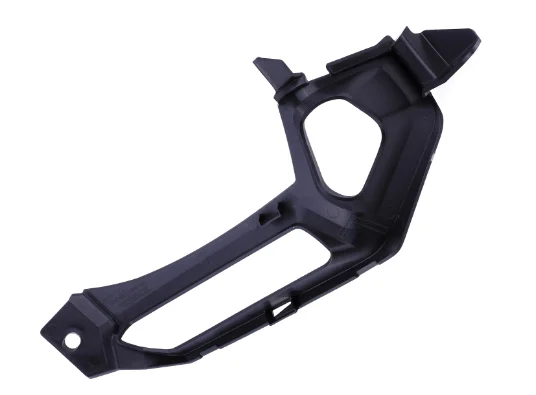- This topic is empty.
-
AuthorPosts
-
2025-04-15 at 5:25 pm #3141
The custom motorcycle industry continues to evolve rapidly, with an increasing demand for precision components that enhance both performance and aesthetics. One of the cornerstones of manufacturing high-quality, reproducible plastic parts – such as fairings, housings, grips, and covers – is injection molding. The injection mold manufacturing process for custom motorcycle parts is a complex interplay of design, engineering, and materials science. In this blog post, as a high precision custom plastic injection mold exporter, Xuzhong will share the custom motorcycle injection mold manufacturing process.
Manufacturing Process of Custom Motorcycle Injection Mold
1. Design and CAD Modeling
The process begins with a detailed component design, typically driven by both functional and stylistic requirements. Using advanced Computer-Aided Design (CAD) software, engineers and industrial designers collaborate to produce a 3D model of the part. For custom motorcycles, aesthetic uniqueness is critical, so designs often feature unconventional shapes and intricate surface textures.
Design considerations include:
– Wall thickness uniformity to ensure even cooling and minimize warping.
– Draft angles to allow for easy part ejection from the mold.
– Undercuts and complex geometries which may require advanced mold mechanisms such as side actions or lifters.
– Material selection depending on the part's intended mechanical properties (e.g., impact resistance, heat tolerance, UV stability).
Once the part design is finalized, a corresponding mold design is created, taking into account the number of cavities, runner systems, cooling channels, and ejector mechanisms.
2. Mold Flow Analysis and Simulation
Before committing to mold fabrication, engineers conduct mold flow analysis using simulation software like Autodesk Moldflow or Moldex3D. These tools simulate the injection molding process virtually, providing insight into:
– Fill time and pressure distribution
– Weld line and air trap locations
– Cooling efficiency and cycle time estimation
– Potential for sink marks, warpage, or voids
Based on the simulation results, the mold design may be iteratively refined to optimize gate placement, venting, and cooling channel layout.
3. Mold Tooling Fabrication
With the validated mold design, the next step is to fabricate the mold tooling. Typically, molds for custom motorcycle parts are constructed using high-strength tool steels such as P20, H13, or S136 due to their durability and thermal properties.
Key steps in mold tooling include:
– CNC Machining: High-precision CNC mills and lathes are used to cut the main mold cavities and cores from steel blocks.
– EDM (Electrical Discharge Machining): Used for creating intricate geometries and fine surface details that are difficult to machine conventionally.
– Surface Treatment: Depending on the resin used, the mold surfaces may be treated with polishing, texturing (e.g., SPI finishes), or coatings like hard chrome plating or PVD to improve mold longevity and part finish.
– Assembly: The mold base, inserts, ejector pins, and cooling systems are assembled into a complete mold tool, ready for testing.
4. Trial Runs and T1 Sampling
Once the mold is built, it undergoes trial runs to produce T1 (first trial) samples. This stage is critical for validating both the mold performance and the part quality. The samples are inspected for:
– Dimensional accuracy using Coordinate Measuring Machines (CMMs)
– Surface finish and aesthetics
– Fit and function within the motorcycle assembly
– Material properties if functional testing is required
Any discrepancies observed during this stage may prompt mold rework, such as adjusting the gate size, adding venting, or modifying cavity dimensions.

5. Mold Validation and Production Approval
Once the mold consistently produces acceptable parts under production conditions, it is validated for mass production. Documentation is finalized, including:
– Process windows for temperature, pressure, and cycle time
– Inspection protocols for ongoing quality assurance
– Maintenance schedules for mold upkeep
For custom motorcycle parts, low- to medium-volume production runs are typical. As such, the mold may be designed for modularity or quick changeovers to accommodate different models or customization requests.
6. Injection Molding Production
In production, thermoplastic pellets – such as ABS, polycarbonate, or nylon – are fed into the injection molding machine' s hopper. The material is heated, plasticized, and injected into the mold cavity under high pressure. The cooling system within the mold helps solidify the plastic quickly, after which ejector pins release the part from the mold.
Cycle times for motorcycle components vary depending on part complexity and material, typically ranging from 20 to 90 seconds.
Post-molding processes may include:
– Trimming and de-gating
– Painting or surface finishing
– Laser marking or logo embossing
– Assembly with metal inserts or other components
7. Quality Control and Final Inspection
Throughout production, quality control is maintained via Statistical Process Control (SPC), visual inspection, and functional tests. Critical dimensions are regularly measured using CMMs or optical comparators, and cosmetic checks ensure surface consistency.
Because custom motorcycle components must meet both aesthetic and performance expectations, high scrutiny is applied to color matching, texture uniformity, and fitment within the motorcycle chassis.
Conclusion
The custom motorcycle injection mold manufacturing process is a highly technical, iterative procedure that blends art and engineering. From CAD design to mold validation, every stage demands precision and foresight to deliver high-quality components that elevate both the form and function of custom motorcycles.
http://www.xuzhongmold.com
Xuzhong -
AuthorPosts
- You must be logged in to reply to this topic.
